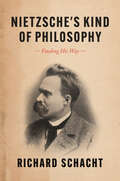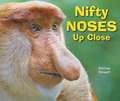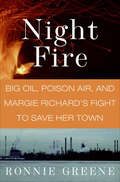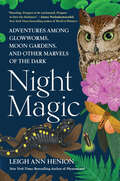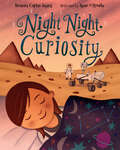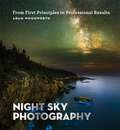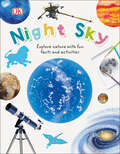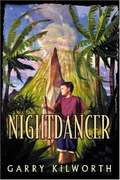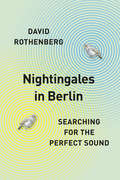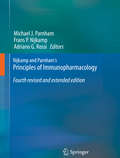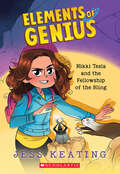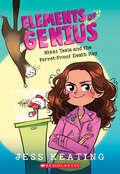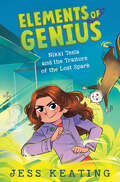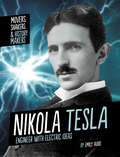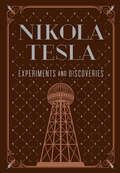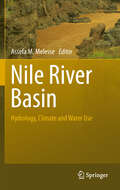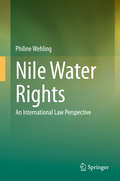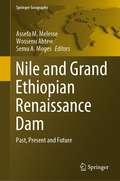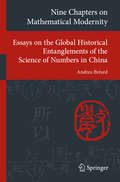- Table View
- List View
Nietzsche's Kind of Philosophy: Finding His Way
by Richard SchachtA holistic reading of Nietzsche’s distinctive thought beyond the “death of God.” In Nietzsche’s Kind of Philosophy, Richard Schacht provides a holistic interpretation of Friedrich Nietzsche’s distinctive thinking, developed over decades of engagement with the philosopher’s work. For Schacht, Nietzsche’s overarching project is to envision a “philosophy of the future” attuned to new challenges facing Western humanity after the “death of God,” when monotheism no longer anchors our understanding of ourselves and our world. Schacht traces the developmental arc of Nietzsche’s philosophical efforts across Human, All Too Human, Daybreak, Joyful Knowing (The Gay Science), Thus Spoke Zarathustra, Beyond Good and Evil, and On the Genealogy of Morality. He then shows how familiar labels for Nietzsche—nihilist, existentialist, individualist, free spirit, and naturalist—prove insufficient individually but fruitful if refined and taken together. The result is an expansive account of Nietzsche’s kind of philosophy.
Nietzsche's Posthumanism (Posthumanities)
by Edgar LandgrafA timely and trenchant commentary on the centrality of Nietzsche&’s thought for our time While many posthumanists claim Nietzsche as one of their own, rarely do they engage his philosophy in any real depth. Nietzsche&’s Posthumanism addresses this need by exploring the continuities and disagreements between Nietzsche&’s philosophy and contemporary posthumanism. Focusing specifically on Nietzsche&’s reception of the life sciences of his day and his reflections on technology—research areas as central to Nietzsche&’s work as they are to posthumanism—Edgar Landgraf provides fresh readings of Nietzsche and a critique of post- and transhumanist philosophies. Through Landgraf&’s inquiry, lesser-known aspects of Nietzsche&’s writings emerge, including the neurophysiological basis of his epistemology (which anticipates contemporary debates on embodiment), his concerns with insects and the emergent social properties they exhibit, and his reflections on the hominization and cultivation effects of technology. In the process, Landgraf challenges major commonplaces about Nietzsche&’s philosophy, including the idea that his social theory asserts the rights of &“the strong&” over &“the weak.&” The ethos of critical posthumanism also offers a new perspective on key ethical and political contentions of Nietzsche&’s writings. Nietzsche&’s Posthumanism presents a uniquely framed introduction to tenets of Nietzsche&’s thought and major trends in posthumanism, making it an essential exploration for anyone invested in Nietzsche and his contemporary relevance, and in posthumanism and its genealogy. Retail e-book files for this title are screen-reader friendly.
Nifty Noses Up Close (Animal Bodies Up Close)
by Melissa StewartDid you know that an elephant can use its trunk to pick up tree branches? Or that polar bears have the best sense of smell of any animal on Earth? In NIFTY NOSES UP CLOSE learn all about how animals use their noses to hunt, breathe, and stay safe.
Night Fire: Big Oil, Poison Air, and Margie Richard's Fight to Save Her Town
by Ronnie GreeneThe Diamond neighborhood was an all-black enclave in the mostly white town of Norco, Louisiana, aptly named for the New Orleans Refining Co., an industrial processing plant. Margie Eugene Richard was raised in the shadow of a giant chemical plant operated by Shell, and witnessed her neighbors fall ill amid the toxic waste the plant emitted year after year. Her own sister, Naomi, eventually succumbed to a rare lung disease linked to environmental hazards. Determined to see Shell take responsibility for its actions, Margie and her neighbors—largely poor and with few obvious resources—educated themselves not only on the consequences of environmental poison but also on how to fight back. The battle took them from Diamond's four streets all the way to The Hague and beyond. The unexpected results won Margie the prestigious Goldman Environmental Prize and helped clean up a community. With riveting narrative drive, Night Fire illustrates how determination and grit can move even the most stubborn of corporate giants.
Night Magic: Adventures Among Glowworms, Moon Gardens, and Other Marvels of the Dark
by Leigh Ann HenionFrom a New York Times bestselling nature writer comes a celebration of what goes on outside in the dark, from blooming moon gardens to nocturnal salamanders, from glowing foxfire and synchronous fireflies that blink in unison like an orchestra of light. In this glorious celebration of the night, New York Times bestselling nature writer Leigh Ann Henion invites us to leave our well-lit homes, step outside, and embrace the dark as a profoundly beautiful part of the world we inhabit. Because no matter where we live, we are surrounded by animals that rise with the moon, and blooms that reveal themselves as light fades. Henion explores her home region of Appalachia, where she attends a synchronous firefly event in Tennessee, a bat outing in Alabama, and a moth festival in Ohio. In North Carolina, she finds forests alight with bioluminescent mushrooms, neighborhood trees full of screech owls, and valleys teeming with migratory salamanders. Along the way, Henion encounters naturalists, biologists, primitive-skills experts, and others who&’ve dedicated their lives to cultivating relationships with darkness. Every page of this lyrical book feels like an opportunity to ask: How did I not know about this before? For example, we learn that it can take hours, not minutes, for human eyes to reach full night vision capacity. And that there are thousands of firefly species on earth, many with flash patterns as unique as fingerprints. In an age of increasing artificial light, Night Magic focuses on the amazing biodiversity that still surrounds us after sunset. We do not need to stargaze into the distant cosmos or dive into the depths of oceans to find awe in the dark. There are dazzling wonders in our own backyards. And readers of World of Wonders, Entangled Life, and The Hidden Life of Trees will discover joy in Night Magic.
Night Night, Curiosity
by Brianna Caplan SayresWhile Mom works the night shift at NASA, Dad helps an intrepid girl get ready for sleep as she imagines she's exploring Mars.In this rhyming bedtime book, a girl whose mother works at NASA imagines that she's exploring Mars with the Curiosity rover as she gets ready for bed. She describes taking off, observing Mars, communicating with mission control, and operating the rover. Young space explorers everywhere will want to head for Mars, too!
Night Sky Photography: From First Principles to Professional Results
by Adam WoodworthWhen the night sky transforms terrestrial landscapes into otherworldly works of art, you need to know the professional techniques for capturing your own nocturnal masterpieces. This complete course combines the classic beauty of landscapes with the vast, exotic universe of astrophotography, using tried-and-tested methods that guarantee stellar results. You'll learn what gear you need and how to make the most of it; clever tricks for squeezing out every drop of image quality from a pitch-black scene; and straightforward post-production workflows to create compelling compositions of the cosmos.
Night Sky Photography: From First Principles to Professional Results
by Adam WoodworthWhen the night sky transforms terrestrial landscapes into otherworldly works of art, you need to know the professional techniques for capturing your own nocturnal masterpieces. This complete course combines the classic beauty of landscapes with the vast, exotic universe of astrophotography, using tried-and-tested methods that guarantee stellar results. You'll learn what gear you need and how to make the most of it; clever tricks for squeezing out every drop of image quality from a pitch-black scene; and straightforward post-production workflows to create compelling compositions of the cosmos.
Night Sky: Explore Nature with Fun Facts and Activities (Nature Explorers)
by DKThe perfect companion for children eager to understand where the Earth sits in space.A fantastic first book on our universe. Explore the world of stars, planets, and astronomy. Discover what a star is, how the moon looks close up, and what tools astronomers use to look at space. With exciting activities, like how to look at the sun safely, and plenty of fun facts, this book is a must for children curious about the night sky.
Night Vision
by Michael Rowan-RobinsonDrawing on exciting discoveries of the last forty years, Night Vision explores how infrared astronomy, an essential tool for modern astrophysics and cosmology, helps astronomers reveal our Universe's most fascinating phenomena - from the birth of stars in dense clouds of gas to black holes and distant colliding galaxies and the traffic of interstellar dust from the formation of our Solar System. While surveying the progress in infrared observation, astronomer Michael Rowan-Robinson introduces readers to the pioneering scientists and engineers who painstakingly developed infrared astronomy over the past two hundred years. Accessible and well illustrated, this comprehensive volume is written for the interested science reader, amateur astronomer or university student, while researchers in astronomy and the history of science will find Rowan-Robinson's detailed notes and references a valuable resource.
Night Walks: A Bedside Companion
by Joyce Carol OatesDozens of short stories selected by Oates for those people suffering from insomnia.
Night in the Middle Ages
by Jean Verdon George HolochNight for Medieval Europe was experienced Night is lit brightly for us moderns. It is experienced differently today than it was during medieval times. The author explores these differences. Also explored are similarities such as beds and how people react to fear and temptation.
Nightdancers
by Garry KilworthWhen a young boy finds an ancient Maori artifact on the Polynesian island where his parents are in the middle of an archaeological dig he little suspects what he is about to release from the past and from his own dreams. The myths of the island hold a dreadful warning for the present day.
Nightingales in Berlin: Searching for the Perfect Sound
by David RothenbergA celebrated figure in myth, song, and story, the nightingale has captivated the imagination for millennia, its complex song evoking a prism of human emotions,—from melancholy to joy, from the fear of death to the immortality of art. But have you ever listened closely to a nightingale’s song? It’s a strange and unsettling sort of composition—an eclectic assortment of chirps, whirs, trills, clicks, whistles, twitters, and gurgles. At times it is mellifluous, at others downright guttural. It is a rhythmic assault, always eluding capture. What happens if you decide to join in? As philosopher and musician David Rothenberg shows in this searching and personal new book, the nightingale’s song is so peculiar in part because it reflects our own cacophony back at us. As vocal learners, nightingales acquire their music through the world around them, singing amidst the sounds of humanity in all its contradictions of noise and beauty, hard machinery and soft melody. Rather than try to capture a sound not made for us to understand, Rothenberg seeks these musical creatures out, clarinet in tow, and makes a new sound with them. He takes us to the urban landscape of Berlin—longtime home to nightingale colonies where the birds sing ever louder in order to be heard—and invites us to listen in on their remarkable collaboration as birds and instruments riff off of each other’s sounds. Through dialogue, travel records, sonograms, tours of Berlin’s city parks, and musings on the place animal music occupies in our collective imagination, Rothenberg takes us on a quest for a new sonic alchemy, a music impossible for any one species to make alone. In the tradition of The Hidden Life of Trees and The Invention of Nature, Rothenberg has written a provocative and accessible book to attune us ever closer to the natural environment around us.
Nijkamp and Parnham's Principles of Immunopharmacology
by Michael J. Parnham Frans P. Nijkamp Adriano G. RossiPrinciples of Immunopharmacology provides a unique source of essential knowledge on the immune response, its diagnosis and its modification by drugs and chemicals. The 4th edition of this internationally recognized textbook has been revised to include recent developments, but continues the established format, dealing with four related fields in a single volume, thus obviating the need to refer to several different textbooks. The first section of the book, providing a basic introduction to immunology and its relevance for human disease, has been updated to accommodate new immunological concepts, particularly the role of epigenetics and the latest understanding of cancer immunology. The second section on immunodiagnostics offers a topical description of widely used molecular techniques and a new chapter on imaging techniques. This is followed by a systematic coverage of drugs affecting the immune system, including natural products. This third section contains 15 updated chapters, covering classical immunopharmacological topics such as anti-asthmatic, anti-rheumatic and immunosuppressive drugs, but also deals with antibiotics, plant-derived and dietary agents, with new chapters on monoclonal antibodies, immunotherapy in sepsis and infection, drugs for soft-tissue autoimmunity and cell therapy. The book concludes with a chapter on immunotoxicology and drug safety tests.Aids to the reader include a two-column format, glossaries of technical terms and appendix reference tables. The emphasis on illustrations is maintained from the first three editions. The book is a valuable single reference for undergraduate and graduate medical and biomedical students, postgraduate chemistry and pharmacy students, researchers in chemistry, biochemistry and the pharmaceutical industry and researchers lacking basic immunological knowledge, who want to understand the actions of drugs on the immune system.
Nikki Tesla and the Fellowship of the Bling (Elements of Genius #2)
by Jess KeatingOcean's 11 meets Spy School in this hilarious illustrated middle-grade adventure series featuring the world's greatest tween geniuses."For a group of geniuses who are supposed to help people, we do an awful lot of stealing."Nikki Tesla and the rest of the Genius Academy team have agreed to pilfer a completely priceless, totally lethal high-tech ring. Why? Because a mad scientist on a power trip plans to use it to do some serious damage. And because the very same mad scientist has kidnapped Mary Shelley. Mess with one genius, and you mess with them all.But mostly they're planning the heist of the century so Nikki can get to know her long-lost father who claims he isn't the criminal mastermind she believes him to be. After all, if a little international thievery can protect the world from evil, it just might save Nikki's family.
Nikki Tesla and the Ferret-Proof Death Ray (Elements of Genius #1)
by Jess KeatingOcean's 11 meets Spy School in this hilarious illustrated middle-grade series featuring the world's greatest minds."Let the official record show that, I, Nikki Tesla, did not intend to destroy the world."There are only so many times a kid can invent an instrument of global destruction without getting grounded. So when Nikki's death ray accidentally blows up her bedroom (if you can call a pet ferret with an itchy trigger finger an accident), she's sent to the only place that can handle her. Genius Academy is a school for history's greatest brains. Leo da Vinci? Charlotte Darwin? Bert Einstein? All extraordinary. Yet even among her fellow prodigies, Nikki feels like an outsider thanks to a terrible secret she can't let anyone discover. Ever. But when her death ray is stolen, Nikki must stop worrying about fitting in and learn to play nice with her new classmates. Because it doesn't take a genius to track a thief around the world, outwit the authorities, and keep a French fry-fanatic ferret happy. It takes all of them.
Nikki Tesla and the Traitors of the Lost Spark (Elements of Genius #3)
by Jess KeatingOcean's 11 meets Spy School in this hilarious illustrated middle-grade adventure series featuring the world's greatest tween geniuses.Genius Academy is under attack! When a routine operation goes horribly wrong, Nikki Tesla and the team take the blame for an international incident of epic proportions, and the school is shut down indefinitely. A little creative "research" tells them someone is planning biological warfare on a grand scale. But to get to the truth and clear their name, Nikki will have to find a miraculous antidote that can stop a criminal mastermind from blowing up the whole world.
Nikola Tesla for Kids: His Life, Ideas, and Inventions, with 21 Activities (For Kids series)
by Amy M. O'QuinnNikola Tesla was a physicist, scientist, electrical engineer, and world-renowned inventor whose accomplishments faded into oblivion after his death in 1943. Tesla was undeniably eccentric and compulsive; some considered him to be somewhat of a "mad" scientist. But in reality, he was a visionary. Many of his ideas and inventions that were deemed impossible during his lifetime have since become reality. He was the first to successfully use rotating magnetic fields to create an AC (alternating current) electrical power supply system and induction motor. He is now acknowledged to have invented the radio ahead of Marconi. Among other things, he developed the Tesla coil, an oscillator, generators, fluorescent tubes, neon lights, and a small remote-controlled boat. He helped design the world's first hydroelectric plant at Niagara Falls. Nikola Tesla for Kids is the story of Nikola Tesla's life and ideas, complete with a time line, 21 hands-on activities, and additional resources to better understand his many accomplishments.
Nikola Tesla: Engineer with Electric Ideas (Movers, Shakers, and History Makers)
by Emily HuddNikola Tesla was a scientist and inventor in the late 1800s and early 1900s. Among his many inventions and experiments, he helped create the modern electricity system. Learn more about Tesla's life as a famous inventor!
Nikola Tesla: Experiments and Discoveries
by Nikola TeslaTesla’s groundbreaking 1892 London lecture and his visionary paper on wireless technology, with an introduction by biographer W. Bernard Carlson.“All these observations fascinate us, and fill us with an intense desire to know more about the nature of these phenomena . . .” —Nikola TeslaIn February 1892, maverick inventor Nikola Tesla strode onto a stage at the Royal Institution of Electrical Engineers in London. The two-hour lecture he delivered mixed groundbreaking scientific theories about electricity, motors, and electromagnetism with dazzling showmanship. It was this combination of drama and intellect that turned Tesla into the cult figure that he remains today.Nikola Tesla: Experiments and Discoveries contains the complete published text of this lecture, originally titled “Experiments with Alternate Currents of High Potential and Low Frequency,” along with numerous illustrations of Tesla's experiments, as well as a biographical sketch of Tesla and his forward-thinking paper on wireless technology: “The Transmission of Electric Energy Without Wires.” This edition also features an introduction by W. Bernard Carlson, author of Tesla: Inventor of the Electrical Age.
Nile River Basin
by Assefa M. MelesseThis book presents results of scientific studies ranging from hydrological modelling to water management and policy issues in the Nile River basin. It examines the physical, hydrometeorological and hydrogeological description of the basin along with analysis in understanding the hydrological processes of the basin under the changing land-use stemming from population pressure and increased natural resources tapping. The book discusses the increased impact of climate change on the river flows, and such issues as water availability and demand, management and policy to offset the imbalance between demand and available resources. This book will be of interest to researchers, practitioners, water resources mangers, policy makers as well as graduate and undergraduate students. It is a useful reference text for ecohydrology, arid zone hydrology, hydrology of transboundary rivers and similar courses.
Nile Water Rights: An International Law Perspective
by Philine WehlingThe book provides a comprehensive assessment of the law governing the use and management of the Nile and considers, more broadly, how international water law can guide the development of a legal and institutional framework for cooperation over shared freshwater resources. It defines the current state of international water law and discusses the content of the United Nations Convention on the Law of the Non-Navigational Uses of International Watercourses. On this basis, it assesses the Nile water treaties and the 2010 Cooperative Framework Agreement for the Nile, and examines their compliance with international law, with a specific focus on the legal consequences of South Sudan's secession from Sudan. Moreover, the book recommends important amendments to the 2010 Agreement. Building on these recommendations, it addresses the implementation of the principle of equitable and reasonable use regarding the Nile, illustrating the extent to which the principle can provide a conceptual framework for regulating water use. The book is a valuable resource for academics and practitioners alike as it combines legal assessment with a discussion of how international water law principles can be implemented in practice.“Essential reading for anyone interested in understanding international law related to the Nile River basin, including its evolution, current challenges and future prospects.” - Professor Alistair Rieu-Clarke, Chair in Law, Law School, Northumbria University, Newcastle “A true must-read for anyone interested in the developing Nile River legal and institutional regime and in how to implement international water law principles and guidance at the transboundary river basin level. Most notably, the book operationalizes the principle of equitable use and applies it to the Nile, pointing the way forward for the cooperative management of the river’s resources.” - Stefano Burchi, Chairman of the Executive Council, International Association for Water Law (AIDA)
Nile and Grand Ethiopian Renaissance Dam: Past, Present and Future (Springer Geography)
by Wossenu Abtew Assefa M. Melesse Semu A. MogesThis book is a contribution by the presenters of the 2020 International Conference on the Nile and Grand Ethiopian Renaissance Dam (GERD). The Nile basin is facing unprecedented level of water right challenges after the construction of GERD has begun. Ethiopia, Egypt and Sudan have struggled to narrow their differences on filling and operation of the GERD. The need for science and data-based discussion for a lasting solution is crucial. Historical perspectives, water rights, agreements, failed negotiations, and other topics related to the Nile is covered in this book. The book covers Nile water claims past and present, international transboundary basin cooperation and water sharing, Nile water supply and demand management, Blue Nile/Abbay and Grand Ethiopian Renaissance Dam, land and water degradation and watershed management, emerging threats of the Lakes Region in the Nile Basin, and hydrologic variation and monitoring. This book is beneficial for students, researchers, sociologists, engineers, policy makers, lawyers, water resources and environmental managers and for the people and governments of the Nile Basin.
Nine Chapters on Mathematical Modernity: Essays on the Global Historical Entanglements of the Science of Numbers in China (Transcultural Research – Heidelberg Studies on Asia and Europe in a Global Context)
by Andrea BréardThe book addresses for the first time the dynamics associated with the modernization of mathematics in China from the nineteenth to the mid-twentieth century from a transcultural global historical perspective. Rather than depict the transformations of mathematical knowledge in terms of a process of westernization, the book analyzes the complex interactions between different scientific communities and the ways in which the past, modernity, language, and mathematics were negotiated in a global context. In each chapter, Andrea Bréard provides vivid portraits of a series of go-betweens (such as translators, educators, or state statisticians) based on a vast array of translated primary sources hitherto unavailable to a non-Chinese readership. They not only illustrate how Chinese scholars mediated between new mathematical objects and discursive modes, but also how they instrumentalized their autochthonous scientific roots in specific political and intellectual contexts. While sometimes technical in style, the book addresses all readers who are interested in the global and cultural history of science and the complexities involved in the making of universal mathematics. “While the pursuit of modernity is in the title, entanglement is of as much interest. Using the famous ‘Nine Chapters’ as a framework, Bréard considers a wide range of that entanglement from divination to data management. Bréard’s analysis and thought-provoking insights show once again how much we can learn when two cultures intersect. A fascinating read!” (John Day, Boston University).
